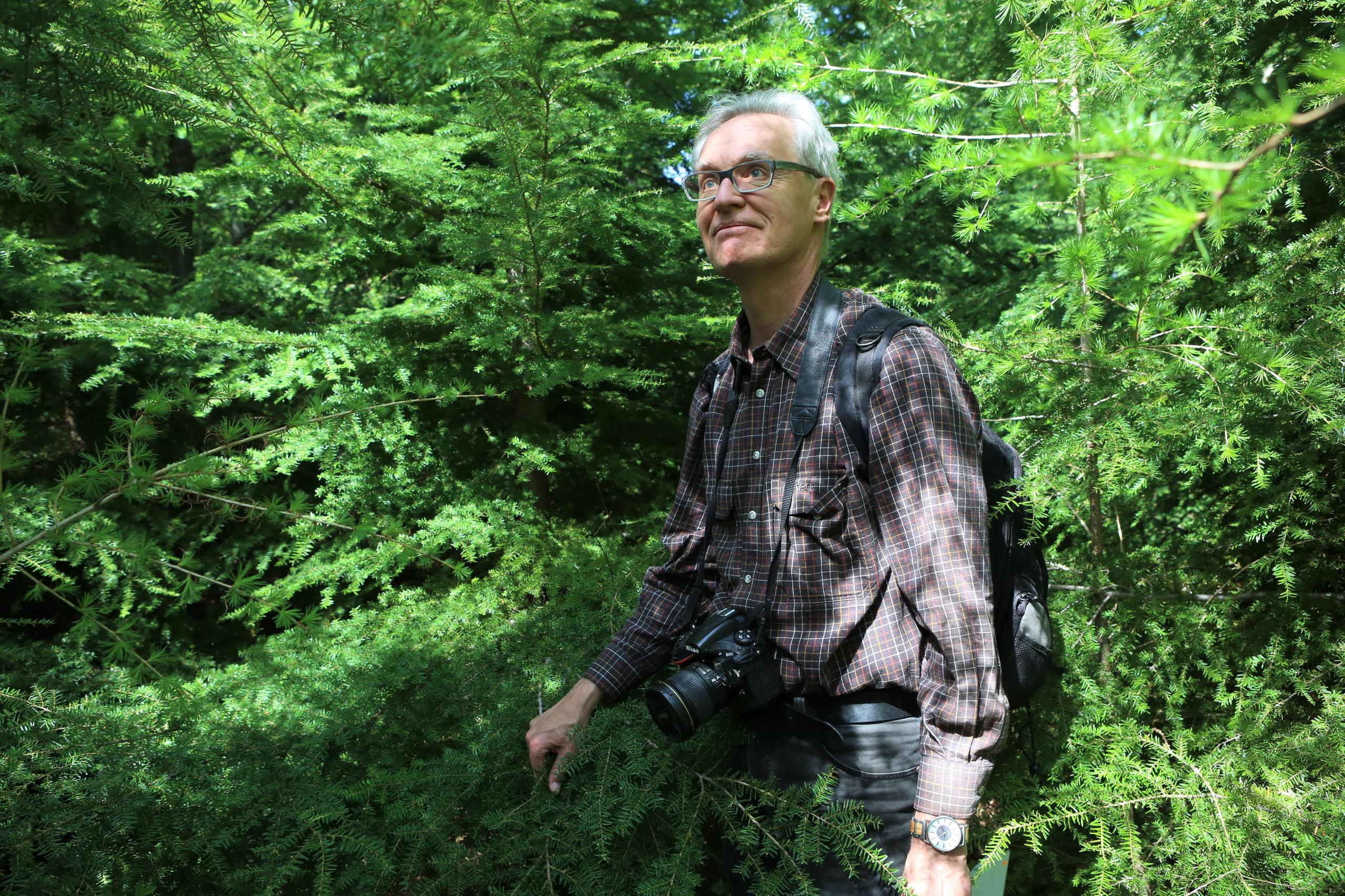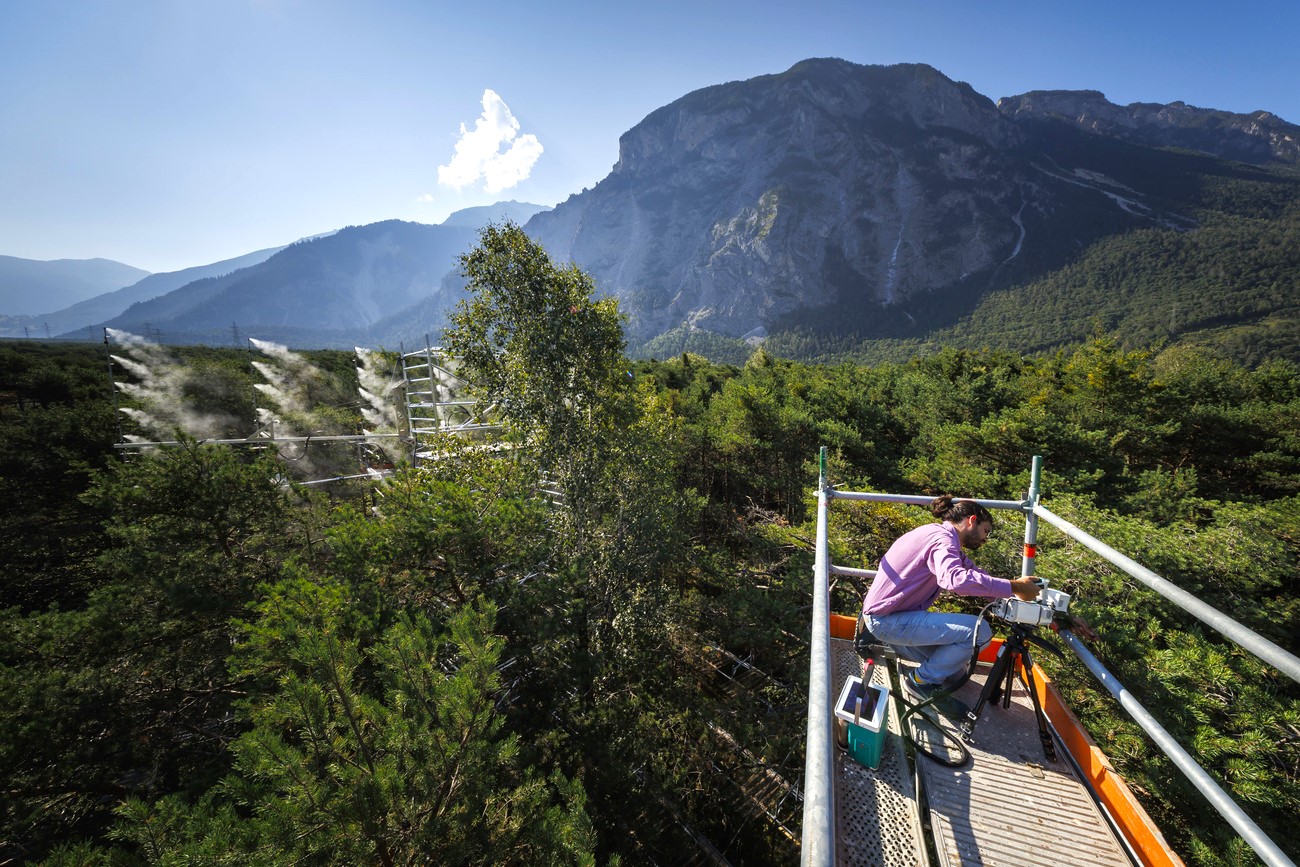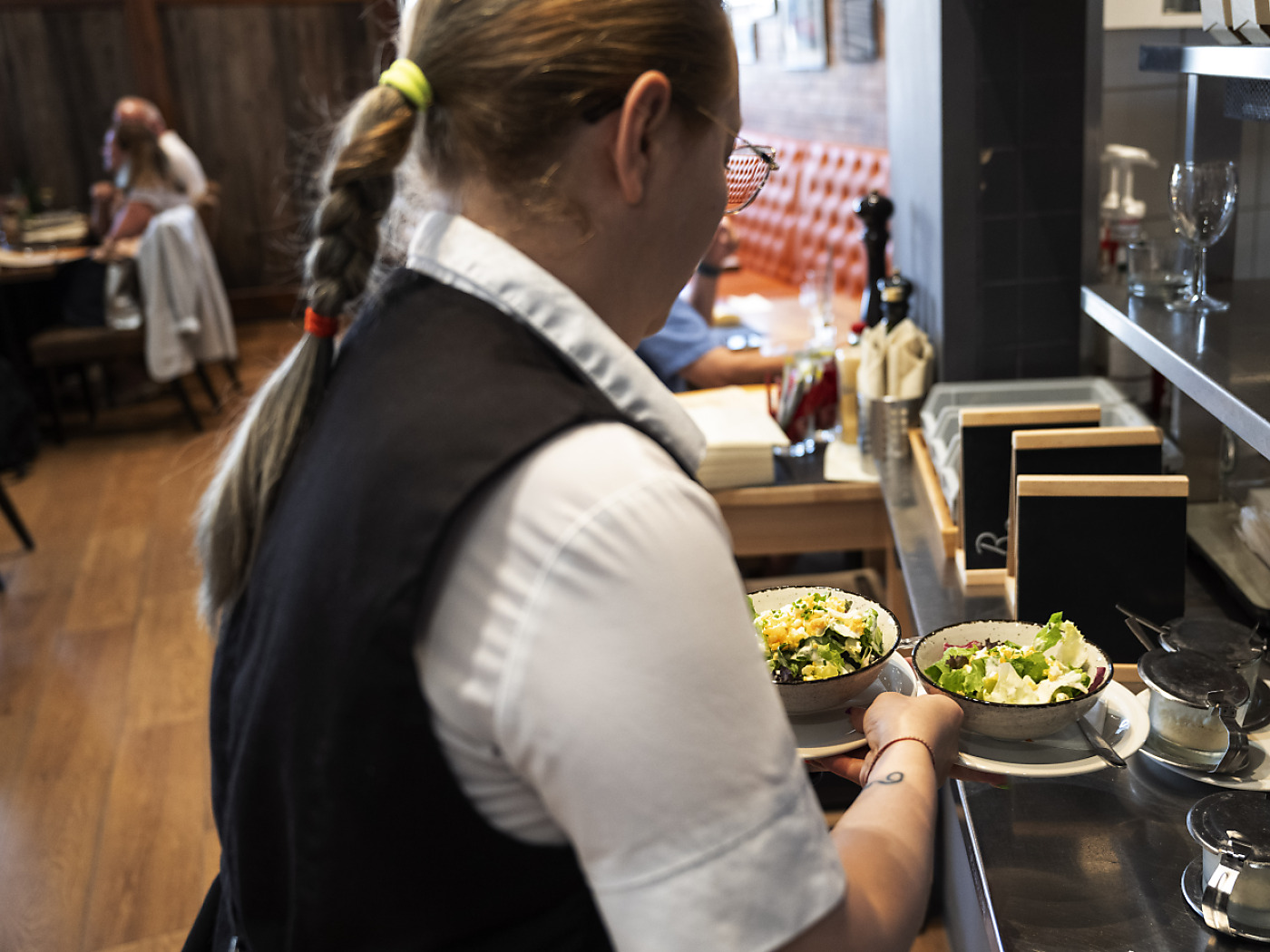
Around 40% of Swiss wood is used directly for energy – in other words, it is burned. Researchers agree that this is far from ideal.
Keystone-SDA
Wood is hardly ever recycled in Switzerland. According to a study by the Swiss Federal Laboratories for Materials Science and Technology (Empa), the recycling rate for wood is just under 8% – while it stands at 70% for paper.
+Get the most important news from Switzerland in your inbox
Around 40% of the five to seven million cubic metres of wood harvested in Switzerland each year is burned directly, according to the study published in the Journal of Industrial Ecology that looks at material flows of wood in Switzerland.
This situation is not ideal, especially as wood is one of the most important raw materials on the road to a climate-neutral future, says Empa.
More

More
Switzerland’s forests of the future
This content was published on
May 30, 2022
Which trees will be able to guarantee the functions of the forest 100 years from now? Switzerland is looking for answers by planting exotic species.
Read more: Switzerland’s forests of the future
“This renewable natural resource binds CO2 from the atmosphere as it grows. Both as a material and as an energy source, wood and its numerous components offer alternatives to fossil fuels and materials,” it said.
For wood to fulfill its function as a long-term CO2 sink, it should remain in the technosphere as a material for as long as possible, say the researchers.
More

More
Swiss experiment targets forest drought, a driver of climate change
This content was published on
Oct 9, 2024
Climate change and droughts are transforming forests and reducing their ability to absorb CO2. Which tree species are suitable for the climate of the future? A unique Swiss experiment is seeking answers.
Read more: Swiss experiment targets forest drought, a driver of climate change
The forest and the use of wood play an important role in achieving the net-zero targets, they stated.
As late as possible in the furnace
The researchers advocate so-called cascading use of wood. In this approach, a harvested tree would first be processed into the largest possible high-quality product – such as beams and boards for construction. This wood should then be (re-)used in this function for as long as possible. Only when reuse is no longer feasible would the wood be broken down into the next material stage, for example as smaller boards, wood chips or wood-based materials.
It should only go into the furnace when it can no longer be used as a material, Empa writes.
The wood research was carried out in collaboration with the Swiss Federal Institute for Forest, Snow and Landscape Research (WSL).
Translated from French by DeepL/sb
How we work
This news story has been written and carefully fact-checked by an external editorial team. At SWI swissinfo.ch we select the most relevant news for an international audience and use automatic translation tools such as DeepL to translate it into English. Providing you with automatically translated news gives us the time to write more in-depth articles.
If you want to know more about how we work, have a look here, if you want to learn more about how we use technology, click here, and if you have feedback on this news story please write to english@swissinfo.ch.
Articles in this story










